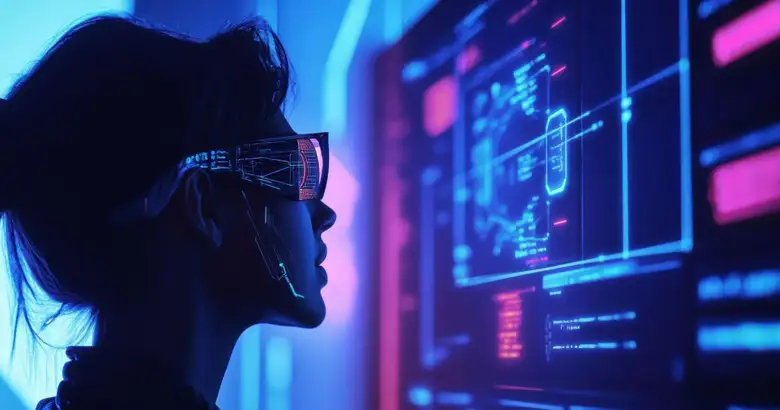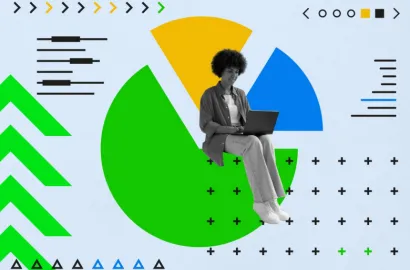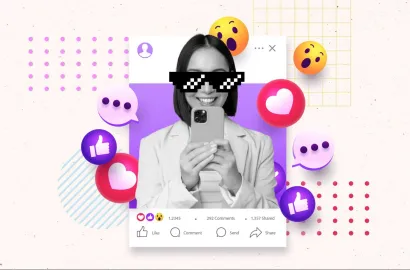Should you use AI to design your logo? We weigh the pros and cons and share practical tips, tools, and examples in this guide.
If you want to create a strong brand identity, you need a distinctive, high-impact logo. The most successful brands have one—and every logo tells a unique story.
Designing an effective logo can be a long and iterative process, requiring a great deal of research, creativity, and strategic thinking.
Then there are AI logo design tools that can generate multiple designs in seconds, saving you significant time and money.
But is AI really the best solution for such an important pillar of your brand identity? Can AI-generated logos compete with human-crafted designs?
Let’s find out.
Contents:
- What is the role of AI in logo design?
- Should you use AI to design your logo? The pros and cons
- How to use AI to design a logo (step-by-step)
- The 5 best AI tools for logo design
- AI logo design examples
- The takeaway
What is the role of AI in logo design?
Whether you’re an entrepreneur facing the task of designing your own logo, or a graphic designer skilled in the art of logo design; you’ve likely noticed the steady rise of AI-powered logo design tools.
Tools like Looka, LogoMakr, and Canva use AI to analyze user preferences and generate logo designs accordingly.
When using these tools, all you need to do is specify what you want—inputting things like company name, industry, and style preferences. The tool takes care of the rest, outputting multiple logo versions for you to choose from.
That’s great in terms of time and efficiency—but creating an effective logo is not simply a case of choosing some text, colors, and imagery. It’s about truly understanding what the brand stands for and capturing that in visual form.
Logo design is one of the most important skills for graphic designers, and it’s not something that can be replaced by AI.
That’s not to say that AI has no place whatsoever in the logo design process, though. It can certainly be a useful tool that offers many advantages—as long as you understand the drawbacks and know how to use it effectively.
With that, let’s weigh up the pros and cons of AI for logo design.
Should you use AI to design your logo? The pros and cons
The prospect of being able to create a custom logo in literal seconds is an incredibly tempting one, especially if your design skills, time, and budget are limited.
But is AI really an effective solution for logo design?

The pros of using AI for logo design:
- Quick and efficient: AI-powered logo design tools can generate quality logos in seconds, streamlining the process and saving valuable time.
- Inexpensive: For businesses and non-designers, using AI to create your logo is inevitably much cheaper than hiring a designer. If you have limited resources, AI tools can offer a budget-friendly solution.
- Some degree of personalization possible: Most AI logo tools allow you to customize certain elements such as fonts, colors, and layouts. This leaves room for some personalization and creative input.
- Allows you to experiment with different styles and creative directions: Thanks to their incredible speed and efficiency, AI tools make it easy to explore multiple design concepts. This enables you to identify the style that best suits your brand without committing to a single direction or concept too early on.
The cons of using AI for logo design:
- AI-generated logos lack originality: AI tools rely on pre-existing templates and design elements. As such, AI-generated logos often feel very generic or may end up looking similar to well-known logos of other brands. This is a major issue for branding; your logo should be truly unique and distinctive.
- Difficult to truly capture your brand identity: While AI tools allow for some customization, they don’t offer the same level of creative freedom and expression you’d get with a custom-made, human-crafted design. If you use AI to generate your logo, you’ll struggle to fully convey the depth, values, and nuances of your brand.
- Potential issues around copyright and ownership: This is a real gray area when using AI for logo design. Depending on the platform’s terms of service, you might face uncertainty regarding the exclusivity and ownership rights of AI-generated logos. This could lead to potential conflicts down the line.
In summary: AI offers a quick and affordable approach to logo design. However, the lack of originality, challenges in capturing brand identity, and potential copyright concerns make it less than ideal if you want to create a truly unique, high-impact logo.
So should you use AI for logo design?
Yes, but for creative inspiration and experimentation only—or as a placeholder until you’re able to create a truly unique logo (or hire a designer to do so).
Your logo forms the basis of your entire brand identity. So, generic, AI-generated designs should be avoided as much as possible. If you can, always opt for a custom, human-designed logo.
How to use AI to design a logo (step-by-step)
With the pros and cons in mind, here’s how you can use AI to generate logo designs.
1. Choose your AI logo design tool
First and foremost, decide which AI tool you’ll use to create your logo. Consider your budget, skill level, and design needs, and experiment with a few options before you choose the most suitable platform.
We introduce some of the best AI tools for logo design in the next section, so use that as your starting point.
2. Define and describe the brand identity
Brainstorm a few words and phrases that describe your brand’s values, personality, and mission—thinking about the kinds of emotions you want to evoke in your target audience.
Is your brand modern, playful, professional, or cutting-edge? Do you want people to feel uplifted, reassured, or entertained when they perceive your brand logo?
These descriptors will guide the logo design process and ultimately help you choose a design that aligns with your brand.

3. Pick your colors
Color is one of the fundamental principles of graphic design—and a crucial building block for an effective logo.
You want to choose a color palette that effectively conveys your brand identity and evokes the desired emotions in your target audience. Blue is often used by branding designers to convey trust and professionalism, for example, while green tends to be associated with sustainability.
If you’re not already familiar, read up on color theory and color psychology to understand the role of color in design. Alternatively, check out this guide to color palettes and how to use them.
4. Specify your industry, business name, and tagline
Most AI logo design tools ask you to specify which industry or sector you’re creating a logo for. This enables the AI to generate logo suggestions that match typical styles and logo design trends within your field.
Your business name and slogan form the basis of your logo, so you’ll also need to enter those into your chosen AI tool.
5. Select your design preferences
This step will vary depending on what tool you’re using, but you should have the option to select your design preferences.
You’re usually able to specify what type of logo you want (we explain the 7 different types of logo design here), your preferences regarding typography styles and font types, as well as your stylistic preferences—for example: bold, minimalist, modern, or classic.
This guides the AI in coming up with designs that align with your creative vision and effectively represent your brand.
6. Generate and customize
You’ve provided everything the AI needs to design a logo for you. Now it’s time to hit “generate” and see what the tool comes up with.
Browse your selection of AI-generated logos and select one or two that stand out. Depending on the tool, you may have the option to customize individual designs by adjusting the layout, fonts, or colors.
If you’re not happy with the designs created, you can start the process again. Try alternative keywords to describe your brand, and experiment with different color palettes and logo types until you get your desired result.
Just bear in mind that AI tools are somewhat limited in their creativity. It’s to be expected that AI-generated logos are relatively generic and simplistic, so don’t spend too long trying to land on the perfect logo. You’ll need a human designer for that!
The 5 best AI tools for logo design
If you’re considering using AI for logo design, you’ll want to find a suitable tool. Here are some of the most popular AI tools for logo design right now.
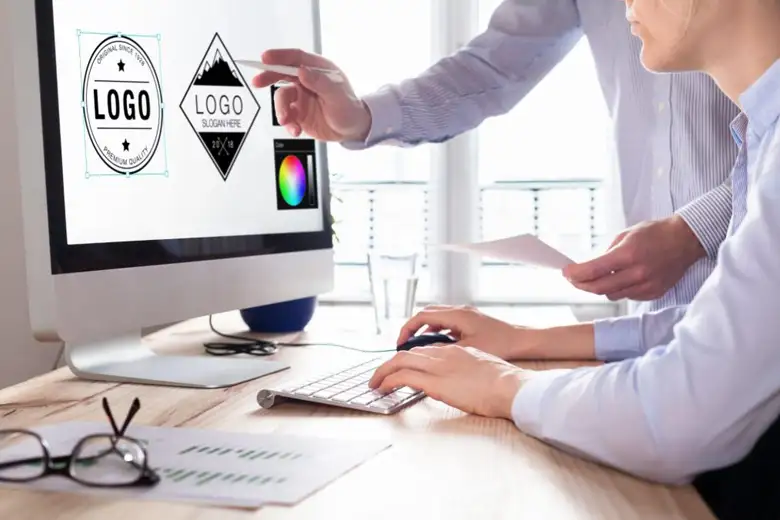
1. Canva
If you’re looking for a user-friendly AI logo design tool, Canva should be your top choice.
Renowned for its versatility and easy drag-and-drop interface, Canva is a firm favorite among graphic designers. As a logo design tool, it offers customizable templates powered by AI, allowing you to experiment with layouts, fonts, and icons.
Key features include an extensive library of design elements and the ability to create cohesive branding across all your visual assets.
2. Looka
Another free AI-driven logo design tool, Looka generates professional logos based on your brand name, industry, and style preferences. It’s popular for its ease of use and the polished results it delivers.
Looka also includes a wide range of customizable logo templates, scalable vector files, and tailored suggestions to match your brand identity.
3. LogoMakr
LogoMakr is a no-frills logo design platform that’s ideal if you’re looking for a quick and budget-friendly solution.
Simply enter your business name into the AI logo generator, describe what your business does in a few words, and input your style preferences.
With the free version, you can download a low-resolution, non-customizable version of your logo. For customizable logos, pricing starts at $29 per design.
4. Tailor Brands
Tailor Brands focuses on creating logos that align with your brand’s personality and goals. With their free AI logo maker tool, you can generate logo options based on a simple brand questionnaire.
You’ll get a wide variety of design styles, and you can refine individual logo designs until they perfectly suit your vision. Another great free tool!
5. Hatchful by Shopify
Powered by Shopify, Hatchful is a free logo design tool built for simplicity and efficiency.
It provides industry-specific templates and easy customization so you can create unique logos effortlessly. Top features include quick logo generation, user-friendly editing tools, and export options for multiple formats.
Hatchful is often praised for creating AI-generated logos that look less generic than some other tools—a great option if you’re worried about standing out.
AI logo design examples
We’ve covered everything you need to know about AI for logo design—so how about seeing it in action?
We used the free AI tool Looka to generate a variety of logos for hypothetical brands. Here’s what we came up with.
AI logo design example 1: Beautiful Lashes
We used Looka’s free AI generator tool to create a logo for a fictitious beauty brand Beautiful Lashes. Here are some of our favorite designs:



AI logo design example 2: TopNotch Content
Next, we created a logo for a hypothetical content-writing agency, TopNotch Content, with the following results:
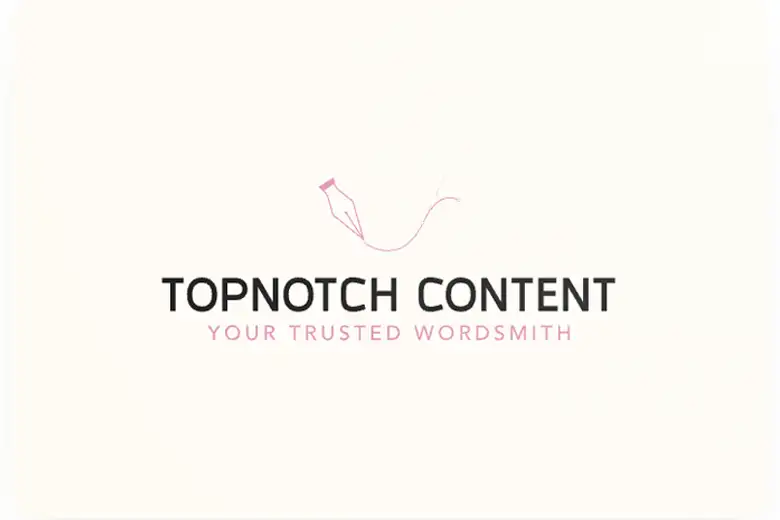
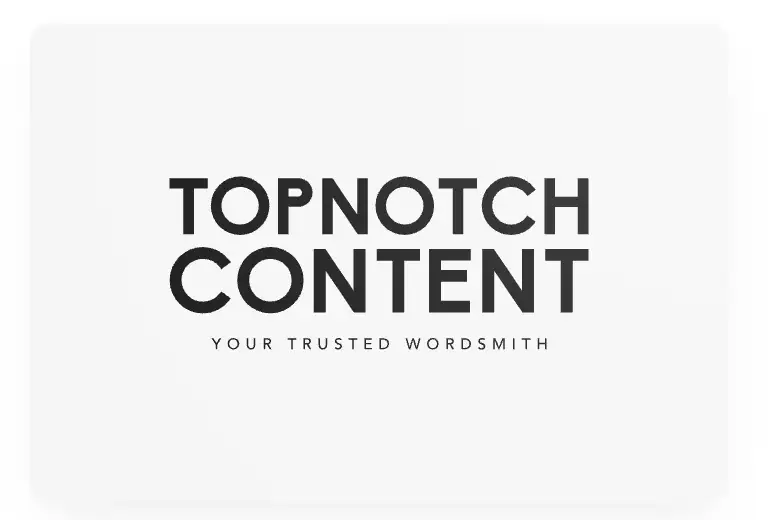
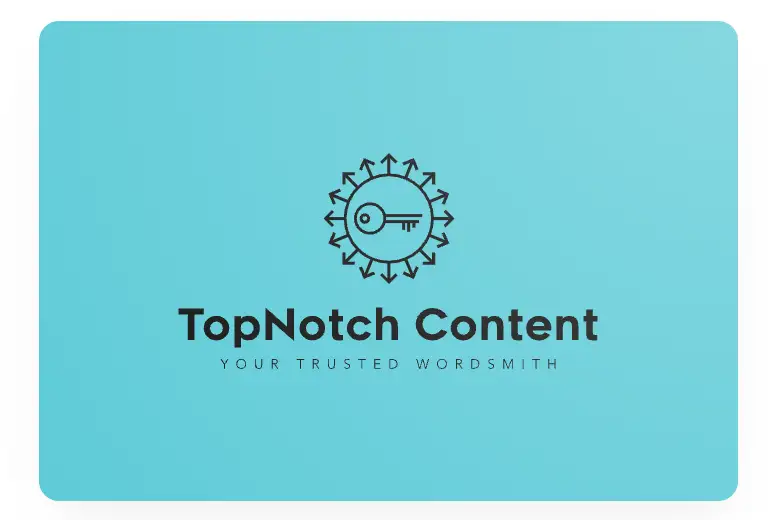
AI logo design example 3: Action BackpaX
Last but not least, we experimented with logo design for Action BackpaX, a hypothetical e-commerce company that sells sustainable, eco-friendly backpacks and accessories for adventurous hikers.
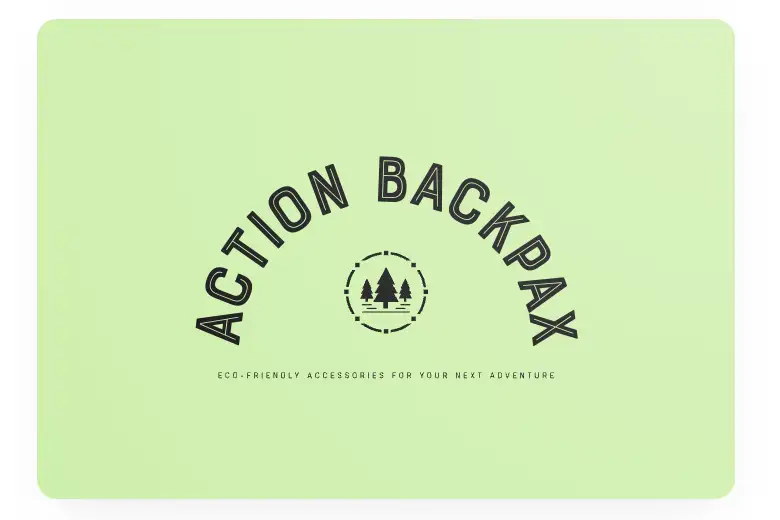
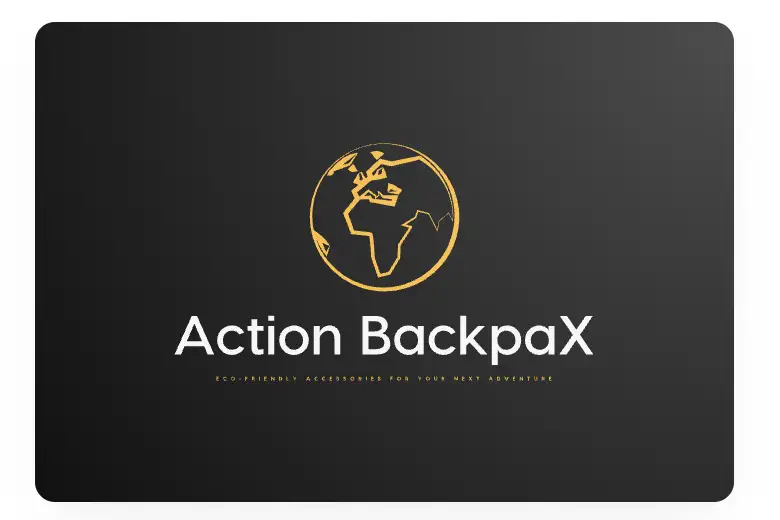
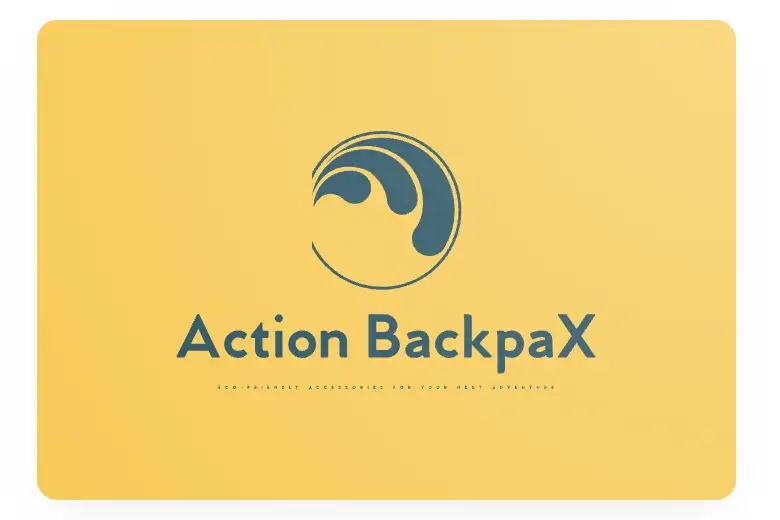
For more logo design inspiration, check out these impressive logo design ideas (with examples).
The takeaway
AI can be a great tool for generating logo designs quickly and affordably. Based on just your business name, stylistic preferences, and a few keywords, you can create multiple logo suggestions in minutes.
However, it’s important to bear in mind that AI-generated logos tend to lack originality. They’re created based on trends and existing designs, so it’s unlikely that you’ll get a logo that feels truly unique or on-brand.
Our ultimate verdict on using AI for logo design? It’s great for experimenting, brainstorming, and trying out different design concepts before committing to a specific direction. And, at a push, AI-generated logos can serve as a placeholder until you get to create a custom logo from scratch.
Ultimately, though, AI is no match for talented logo designers. And, considering just how fundamental your logo is in forming your brand identity and connecting with your target audience, it’s something you’ll want to invest in when thinking long-term.
We hope you’ve enjoyed reading about the role of AI in logo design. For more industry guides, insights, and tools, check out the following:
- Everything You Need To Know About AI in Graphic Design
- A Step-by-Step Guide to Choosing the Right Website Color Palette
- The Best Logo Design Tools and Software (Free & Paid)
Next Steps
We hope this guide helped you understand the logo design trends you need to focus on in 2025. We also recommend you check out this project by AND Learner, Abhishek Singh to get inspiration for your next logo design project. In case you need further assistance, here are some of our resources you can consider:
- Watch this session by design veteran and AND’s Academic Head, Prachi Mittal, and our Course Lead, Soumya Tiwari.
- Talk to a course advisor to discuss how you can transform your career with one of our courses.
- Pursue our Graphic Design courses - all courses are taught through live, interactive classes by industry experts, and some even offer a Job Guarantee.
- Take advantage of the scholarship and funding options that come with our courses to overcome any financial hurdle on the path of your career transformation.
Note: All information and/or data from external sources is believed to be accurate as of the date of publication.

